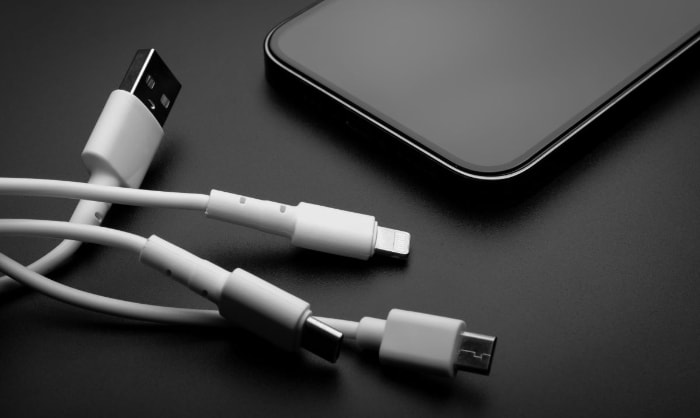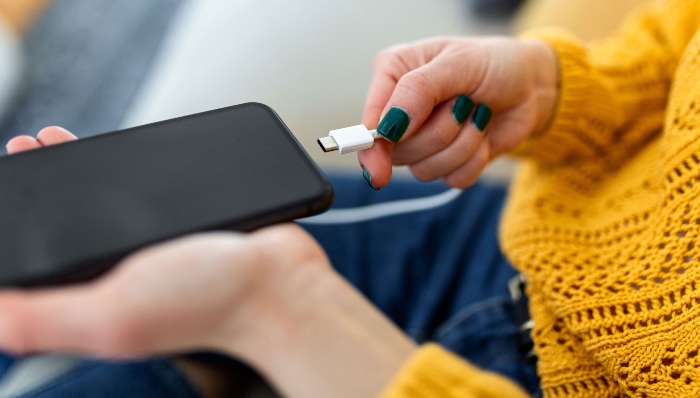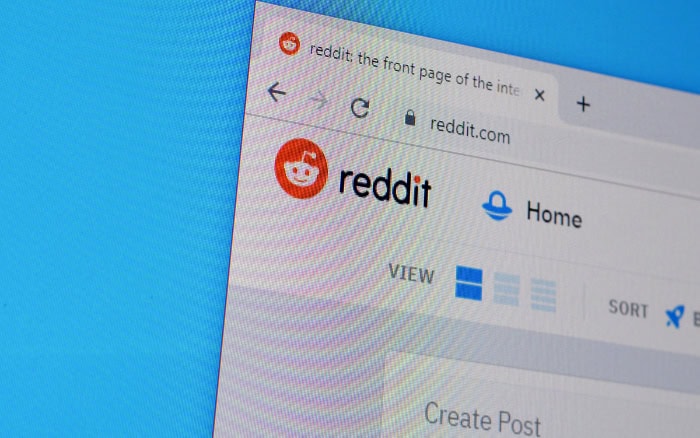Different Types of Phone Chargers: Know Your Needs

Charging your phone: it’s an action so routinely integrated into our daily lives that we often overlook its significance. But have you ever stopped to ponder the complexity and innovation behind that simple act? Phone chargers come in a surprising variety of shapes and sizes, each with its own set of features, benefits, and drawbacks.
USB-A Chargers
The USB-A charger, often simply referred to as USB, is one of the oldest yet still widely used forms of the Universal Serial Bus standard. Characterized by its rectangular shape, it was one of the first designs that came into widespread use for data transfer and charging.
Design and Characteristics
The USB-A port features a flat, rectangular shape. This design was considered to be user-friendly but is not reversible, meaning it has a specific orientation for insertion. Typically, the ports are color-coded, with the most common being blue for USB 3.0, which is the faster variant, and black for USB 2.0.
Typical Use-Cases and Compatibility
USB-A chargers are highly versatile and are compatible with a multitude of devices. Initially, they were used primarily for connecting keyboards, mice, and other peripheral devices to computers.
As technology progressed, USB-A found its way into charging and data transfer for smartphones, tablets, cameras, and even some laptops. However, in the context of smartphones, USB-A is generally found on the charger or computer side, while the other end is often a different type, like Micro USB or USB-C.
Voltage and Speed Capabilities
The voltage for USB-A chargers generally adheres to a 5V output for basic charging. When it comes to data transfer speed, USB-A has seen several versions.
USB 1.x offers speeds up to 12 Mbps, USB 2.0 goes up to 480 Mbps, and USB 3.0 can reach up to 5 Gbps. While USB-A can’t match the speed and power delivery capabilities of some newer standards, its universal compatibility keeps it relevant.
Micro USB Chargers
Micro USB chargers became the standard for mobile devices, particularly among Android smartphones, in the late 2000s. They offered a smaller form factor compared to their mini USB predecessors and were widely adopted due to their balance between size and functionality.
Design Specifics
Micro USB ports have a slim and compact design, featuring a five-pin setup. Unlike the rectangular USB-A, they have a trapezoidal shape, making it easier to identify the orientation for insertion.
However, the design also made the connectors relatively fragile, prone to wear and tear over time.
Compatibility with Older Android and Other Devices
The reign of Micro USB was most prominent among Android devices produced between 2008 and 2016. In addition to smartphones, Micro USB was found in other electronics like Bluetooth speakers, headphones, and even some cameras.
Its adoption wasn’t limited to Android; some earlier versions of Windows phones and Blackberry devices also featured Micro USB ports.
Gradual Phasing Out and Reasons
Over the years, Micro USB has started to lose its prominence in the market. This shift can be attributed to various factors including the limitations of its design, which is more prone to wear and tear.
Additionally, technological advancements have led to chargers and ports that offer faster data transfer speeds and higher power output, which Micro USB standards are not fully equipped to handle. This led device manufacturers to look for alternatives that can cater to the rising demands of modern electronics.
USB-C Chargers
USB-C represents a significant advancement in the realm of charging and data transfer. With a design that champions user convenience and technological capability, it has quickly become the go-to standard for a new generation of electronic devices.
Reversible Design of USB-C
One of the most noteworthy features of USB-C is its reversible design. Unlike older USB types, which required the user to insert the connector in a specific orientation, USB-C eliminates this hassle.
You can plug it in either way, making the connection process far more straightforward.
Universal Compatibility and Fast-Charging Capabilities
USB-C isn’t just for charging smartphones; it’s a truly universal port. From laptops and tablets to cameras and game consoles, USB-C has a broad range of applications.
Furthermore, it offers fast-charging capabilities. With the support for USB Power Delivery, it can deliver up to 100 watts of power, drastically reducing the time required to charge a device.
This is especially beneficial for larger electronics like laptops, which previously required their own proprietary chargers.
Current Status as the Industry Standard
USB-C has rapidly gained acceptance across manufacturers and users alike, leading it to become the current industry standard. Its combination of convenience, speed, and versatility makes it the obvious choice for modern electronic devices.
Companies are increasingly adopting USB-C for their new products, further cementing its dominant position in the market.
Lightning Chargers

When it comes to proprietary technology in the charging domain, Apple’s Lightning charger stands out. Used exclusively by Apple, the Lightning connector has both critics and advocates, offering a unique set of features and limitations.
Proprietary Nature of Lightning Chargers
The Lightning charger is exclusive to Apple and represents the company’s desire to control its ecosystem tightly. Unlike USB-C and other universal chargers, Lightning chargers are manufactured solely by Apple or licensed third-party vendors.
This exclusivity allows Apple to maintain higher quality control but also limits the consumer’s options for replacement or additional chargers.
Compatibility with Apple Products
Lightning chargers are designed for a wide array of Apple products. From iPhones to iPads and even some models of the iPod, if you own multiple Apple devices, a single Lightning charger could suffice for all of them.
However, it’s worth noting that Apple’s MacBook line has transitioned to USB-C, breaking the uniformity in the company’s charging solutions.
Pros and Cons Compared to USB-C
While Lightning and USB-C may seem similar, there are key differences. On the upside, Lightning ports are generally smaller, allowing for sleeker device designs.
They also have a robust and durable design. On the downside, they aren’t as versatile as USB-C ports, which can handle higher power levels and a broader range of functions, including video output.
Also, the proprietary nature of Lightning means that consumers are somewhat restricted in their choice of accessories, as only Apple or licensed vendors can produce them.
Wireless Chargers
Wireless charging has been a game-changing innovation in the realm of device power solutions. It brings a new level of convenience, offering a charging method that requires no physical connectors between the device and the power source.
Introduction to Wireless Charging
The fundamental principle behind wireless charging is electromagnetic induction. When electricity passes through a coil within the charging pad, it creates an electromagnetic field. A corresponding coil in the device being charged picks up this field and converts it back into electricity to fill up the battery.
The process eliminates the need for cords, making it a truly “wireless” experience.
Qi-Standard and Compatibility
The Qi standard is the most widely adopted protocol for wireless charging. Developed by the Wireless Power Consortium, Qi ensures that all chargers and devices bearing its logo are compatible.
This standardization is crucial, as it means you can use a single Qi-certified charging pad to power multiple types of devices, from smartphones to earbuds.
Convenience and Limitations
The primary advantage of wireless charging is the convenience it offers. Simply placing your device on a pad eliminates the need to fumble with cords.
However, there are limitations. Wireless charging is generally slower than its wired counterparts, and it requires the device to be in close proximity to the charger, meaning you can’t use your phone while it’s being charged unless you remove it from the pad.
Magnetic Chargers
Magnetic chargers add an extra layer of usability and safety to the charging experience. They rely on magnetism to attach the charger to the device, providing a more straightforward and often safer means of powering up.
Mechanism of Magnetic Charging
Magnetic chargers use magnets to secure the charging cable to the port on the device. This magnetic connection ensures that the cable snaps into place easily and aligns perfectly for optimal charging.
The mechanism is not just user-friendly; it also allows for quick detachment in case someone trips over the cable, preventing potential damage to the device.
Examples Like Apple’s MagSafe
One of the most well-known examples of magnetic charging technology is Apple’s MagSafe, originally introduced in MacBook laptops and more recently adapted for the iPhone 12 series and beyond. MagSafe chargers are lauded for their ease of use and the additional functionalities they offer, such as compatibility with various accessories like wallet attachments and stands.
Safety and Usability Aspects
From a safety perspective, magnetic chargers offer a significant advantage. The ease of detachment reduces the risk of pulling a device off a surface or damaging the charging port.
Moreover, high-quality magnetic chargers are designed to prevent issues like electrical shorts. On the usability front, magnetic chargers are generally easier to connect, making them especially useful in low-light conditions or for people with limited dexterity.
Conclusion
Charging technology has come a long way from the basic, one-size-fits-all solutions of yesteryears. Today, we have a diverse range of options, each with its unique set of advantages and drawbacks.
From the classic USB-A to the ever-evolving USB-C, from the exclusivity of Lightning chargers to the universal compatibility offered by Qi wireless standards, consumers are presented with various choices tailored to their specific needs. Magnetic chargers add another layer of innovation, blending safety with usability.
By comprehending the features and limitations of each type, individuals and organizations alike can make informed decisions that best serve their charging requirements. This diversification in charging solutions is not just a testament to technological progress; it illustrates the complexity of our daily interactions with electronic devices in a world where connectivity is essential.


